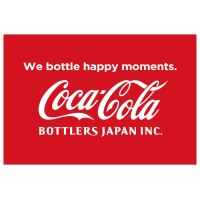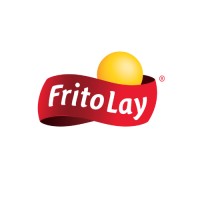
Restaurant Brands International Company Cyber Security Posture
rbi.comRestaurant Brands International Inc. is one of the world's largest quick service restaurant companies with nearly $45 billion in annual system-wide sales and over 32,000 restaurants in more than 120 countries and territories. RBI owns four of the world's most prominent and iconic quick service restaurant brands – TIM HORTONS®, BURGER KING®, POPEYES®, and FIREHOUSE SUBS®. These independently operated brands have been serving their respective guests, franchisees and communities for decades. Through its Restaurant Brands for Good framework, RBI is improving sustainable outcomes related to its food, the planet, and people and communities. RBI is committed to growing the TIM HORTONS®, BURGER KING®, POPEYES® and FIREHOUSE SUBS® brands by leveraging their respective core values, employee and franchisee relationships, and long track records of community support. Each brand benefits from the global scale and shared best practices that come from ownership by Restaurant Brands International Inc.
RBI Company Details
restaurant-brands-international
7745 employees
180432.0
722
Food and Beverage Services
rbi.com
Scan still pending
RES_2754323
In-progress
Between 900 and 1000
This score is AI-generated and less favored by cyber insurers, who prefer the TPRM score.
 RBI Global Score
RBI Global Score.png)

Restaurant Brands International Company Scoring based on AI Models
| Model Name | Date | Description | Current Score Difference | Score |
|---|---|---|---|---|
| AVERAGE-Industry | 03-12-2025 | This score represents the average cybersecurity rating of companies already scanned within the same industry. It provides a benchmark to compare an individual company's security posture against its industry peers. | N/A | Between 900 and 1000 |
Restaurant Brands International Company Cyber Security News & History
| Entity | Type | Severity | Impact | Seen | Url ID | Details | View |
|---|---|---|---|---|---|---|---|
| Burger King | Data Leak | 85 | 4 | 05/2019 | BUR22620323 | Link | |
Rankiteo Explanation : Attack with significant impact with customers data leaksDescription: A French online shop Kool King specifically tailored to be used by kids who bought Burger King menus exposed nearly 37,900 records after a cyber attack. The data was leaked because the database storing it was misconfigured, allowing anyone with an Internet connection and the knowledge to find it to get to the records stored within. Since the database was not secured in any way and publicly accessible, anyone who reached it could then edit, download, or even destroy the data without needing admin credentials. The information compromised contained personally identifiable information (PII) such as emails, passwords, names, phones, DOB, voucher codes, links to the externally stored certificates, etc.100 | |||||||
| Burger King | Data Leak | 60 | 3 | 08/2023 | BUR22818923 | Link | |
Rankiteo Explanation : Attack with significant impact with internal employee data leaksDescription: Burger King, the world's largest fast food chain, exposed sensitive credentials to the public twice, endangering their systems and data. Burger King in France exposed private information to the public as a result of a website configuration error, the Cybernews investigation team found. People who applied for jobs at Burger King in France may have been impacted because the impacted website processed job applications. It's not the first time Burger King has exposed sensitive information; supposedly, the France branch exposed personally identifying information (PII) of children who purchased Burger King menus due to a similar misconfiguration. | |||||||
Restaurant Brands International Company Subsidiaries

Restaurant Brands International Inc. is one of the world's largest quick service restaurant companies with nearly $45 billion in annual system-wide sales and over 32,000 restaurants in more than 120 countries and territories. RBI owns four of the world's most prominent and iconic quick service restaurant brands – TIM HORTONS®, BURGER KING®, POPEYES®, and FIREHOUSE SUBS®. These independently operated brands have been serving their respective guests, franchisees and communities for decades. Through its Restaurant Brands for Good framework, RBI is improving sustainable outcomes related to its food, the planet, and people and communities. RBI is committed to growing the TIM HORTONS®, BURGER KING®, POPEYES® and FIREHOUSE SUBS® brands by leveraging their respective core values, employee and franchisee relationships, and long track records of community support. Each brand benefits from the global scale and shared best practices that come from ownership by Restaurant Brands International Inc.
Access Data Using Our API

Get company history
.png)
RBI Cyber Security News
Burger King-parent Restaurant Brands' quarterly results miss on weak demand
Restaurant Brands (QSR.TO) missed first-quarter revenue and profit estimates on Thursday, hurt by sluggish demand at its restaurant chains such as Burger King ...
Restaurant Brands earnings miss as Burger King, Popeyes and Tim Hortons post same-store sales declines
Restaurant Brands International on Thursday reported quarterly earnings and revenue that missed analysts' expectations as same-store sales of Popeyes, Burger ...
Restaurant Brands International Inc. (QSR)’s Burger King Turns Up the Heat with Dragon Whopper and Family-First Marketing Blitz
Burger King, a unit of Restaurant Brands International Inc. (NYSE:QSR), is intensifying its U.S. turnaround strategy by targeting families ...
Restaurant Brands International acquires Burger King China for $158m
Restaurant Brands International (RBI), the parent company of Burger King, Tim Hortons and Popeyes, has announced that one of its subsidiaries ...
Restaurant Brands International Sets Key Q1 2025 Earnings Date - Mark Your Calendar
Restaurant Brands International (QSR) has announced it will release its first quarter 2025 financial results on Thursday, May 8, 2025.
Brinker Int’l Promotes Leader to EVP, COO & Chief People Officer for Chili’s and Maggiano’s
Longtime Brinker International leader Aaron White has been promoted to executive vice president, chief operating officer, and chief people ...
Joe Suareo | 2025 Chicago CISO ORBIE Awards
Joseph Suareo is a seasoned IT Security Executive with extensive expertise in governance, risk management, compliance and cybersecurity strategy.
Restaurant Brands International (NYSE:QSR) Sees 4% Share Price Dip Over Last Quarter
In This Article: QSR · Restaurant Brands International reported a 4% decline in its share price over the last quarter, a movement consistent ...
Restaurant Brands International to continue Burger King modernisation
The company overseeing Burger King is progressing with a comprehensive strategy to enhance the brand's sales growth and drive franchisee profitability.

RBI Similar Companies

Coca-Cola Bottlers Japan Inc.
Coca-Cola Bottlers Japan Inc. (CCBJI, Security Code: First Section of TSE 2579), which has been established through the integration between Coca-Cola West and Coca-Cola East Japan on April 1, 2017, is one of the largest soft drink companies in Japan and the largest Coca-Cola bottler in Asia with sal

Shree Renuka Sugars Limited
Shree Renuka Sugars is the fifth largest sugar manufacturer with a capacity of 40,000TCD and the largest refiner with a capacity of 4000TPD in India. Company accounts for 20% of India’s sugar exports and is the leader in fuel ethanol with a 20% market share. Company’s current power and ethanol produ

Compass Group
Compass Group PLC is a world leading food and support services company, which serves meals to millions of people in c.35 countries and employs and engages more than 550,000 people globally. The Company specialises in providing food and a range of support services across the core sectors of Business

Solico Group
It has long been a mission of Solico Group’s founder, Gholamali Soleimani, to enrich people’s lives with the joy of diversified tastes. As an alliance of over 30 subsidiaries with around 17,000 employees, Solico Group’s business includes dairy, meat, snacks, beverages, ice-cream, and other fo

US Foods
US Foods is one of America’s great food companies and a leading foodservice distributor, partnering with approximately 300,000 restaurants and foodservice operators to help their businesses succeed. With 28,000 associates and more than 70 locations, US Foods provides its customers with a broad and

Frito-Lay
We believe every consumer should have access to their favorite snack, everywhere. We own the manufacturing process from seed to shelf and actively invest in technology to automate key steps of the process. This helps us be more agile in what we need to make, who we need to make it for, and how we ca

Frequently Asked Questions
Explore insights on cybersecurity incidents, risk posture, and Rankiteo's assessments.
RBI CyberSecurity History Information
How many cyber incidents has RBI faced?
Total Incidents: According to Rankiteo, RBI has faced 2 incidents in the past.
What types of cybersecurity incidents have occurred at RBI?
Incident Types: The types of cybersecurity incidents that have occurred incidents Data Leak.
Incident Details
Can you provide details on each incident?

Incident : Data Exposure
Title: Burger King Data Exposure Incidents
Description: Burger King, the world's largest fast food chain, exposed sensitive credentials to the public twice, endangering their systems and data.
Type: Data Exposure
Attack Vector: Website Configuration Error
Vulnerability Exploited: Website Misconfiguration

Incident : Data Breach
Title: Kool King Data Breach
Description: A French online shop Kool King specifically tailored to be used by kids who bought Burger King menus exposed nearly 37,900 records after a cyber attack. The data was leaked because the database storing it was misconfigured, allowing anyone with an Internet connection and the knowledge to find it to get to the records stored within. Since the database was not secured in any way and publicly accessible, anyone who reached it could then edit, download, or even destroy the data without needing admin credentials. The information compromised contained personally identifiable information (PII) such as emails, passwords, names, phones, DOB, voucher codes, links to the externally stored certificates, etc.
Type: Data Breach
Attack Vector: Misconfigured Database
Vulnerability Exploited: Publicly Accessible Database
What are the most common types of attacks the company has faced?
Common Attack Types: The most common types of attacks the company has faced is Data Leak.
Impact of the Incidents
What was the impact of each incident?

Incident : Data Exposure BUR22818923
Data Compromised: Personally Identifiable Information (PII), Children's PII
Systems Affected: Job Application Website, Online Ordering System

Incident : Data Breach BUR22620323
Data Compromised: emails, passwords, names, phones, DOB, voucher codes, links to the externally stored certificates
Systems Affected: Database
What types of data are most commonly compromised in incidents?
Commonly Compromised Data Types: The types of data most commonly compromised in incidents are PII, Children's PII, emails, passwords, names, phones, DOB, voucher codes and links to the externally stored certificates.
Which entities were affected by each incident?

Incident : Data Breach BUR22620323
Entity Type: Online Shop
Industry: Retail
Location: France
Customers Affected: 37900
Data Breach Information
What type of data was compromised in each breach?

Incident : Data Exposure BUR22818923
Type of Data Compromised: PII, Children's PII
Personally Identifiable Information: Job Applicants, Children's PII

Incident : Data Breach BUR22620323
Type of Data Compromised: emails, passwords, names, phones, DOB, voucher codes, links to the externally stored certificates
Number of Records Exposed: 37900
Sensitivity of Data: High
Personally Identifiable Information: emails, passwords, names, phones, DOB
References
Where can I find more information about each incident?

Incident : Data Exposure BUR22818923
Source: Cybernews Investigation Team
Where can stakeholders find additional resources on cybersecurity best practices?
Additional Resources: Stakeholders can find additional resources on cybersecurity best practices at and Source: Cybernews Investigation Team.
Post-Incident Analysis
What were the root causes and corrective actions taken for each incident?

Incident : Data Breach BUR22620323
Root Causes: Misconfigured Database
Additional Questions
Impact of the Incidents
What was the most significant data compromised in an incident?
Most Significant Data Compromised: The most significant data compromised in an incident were Personally Identifiable Information (PII), Children's PII, emails, passwords, names, phones, DOB, voucher codes and links to the externally stored certificates.
What was the most significant system affected in an incident?
Most Significant System Affected: The most significant system affected in an incident were Job Application Website, Online Ordering System and Database.
Data Breach Information
What was the most sensitive data compromised in a breach?
Most Sensitive Data Compromised: The most sensitive data compromised in a breach were Personally Identifiable Information (PII), Children's PII, emails, passwords, names, phones, DOB, voucher codes and links to the externally stored certificates.
What was the number of records exposed in the most significant breach?
Number of Records Exposed in Most Significant Breach: The number of records exposed in the most significant breach was 379.0.
References
What is the most recent source of information about an incident?
Most Recent Source: The most recent source of information about an incident is Cybernews Investigation Team.
What Do We Measure?
















Every week, Rankiteo analyzes billions of signals to give organizations a sharper, faster view of emerging risks. With deeper, more actionable intelligence at their fingertips, security teams can outpace threat actors, respond instantly to Zero-Day attacks, and dramatically shrink their risk exposure window.
These are some of the factors we use to calculate the overall score:
Identify exposed access points, detect misconfigured SSL certificates, and uncover vulnerabilities across the network infrastructure.
Gain visibility into the software components used within an organization to detect vulnerabilities, manage risk, and ensure supply chain security.
Monitor and manage all IT assets and their configurations to ensure accurate, real-time visibility across the company's technology environment.
Leverage real-time insights on active threats, malware campaigns, and emerging vulnerabilities to proactively defend against evolving cyberattacks.




